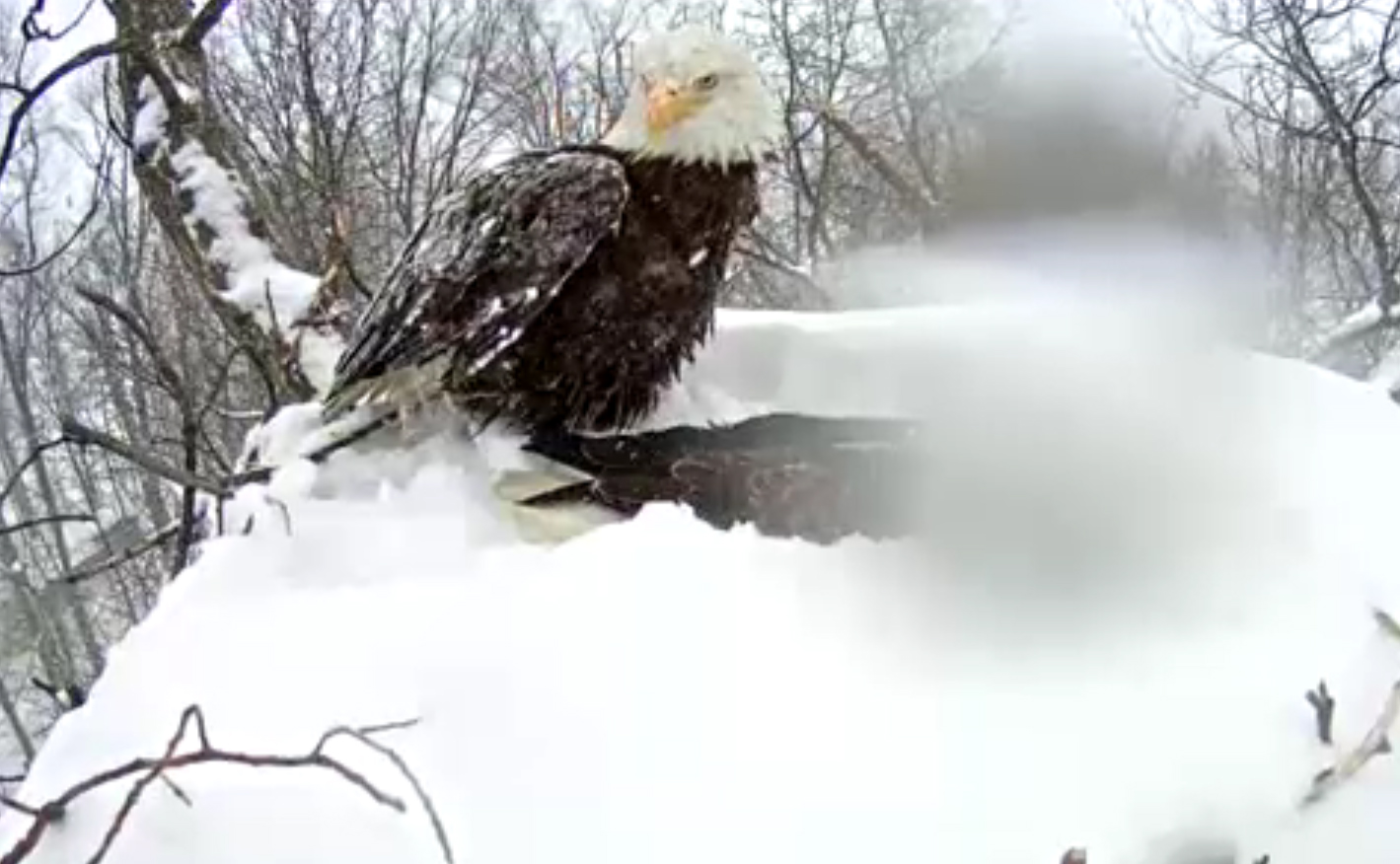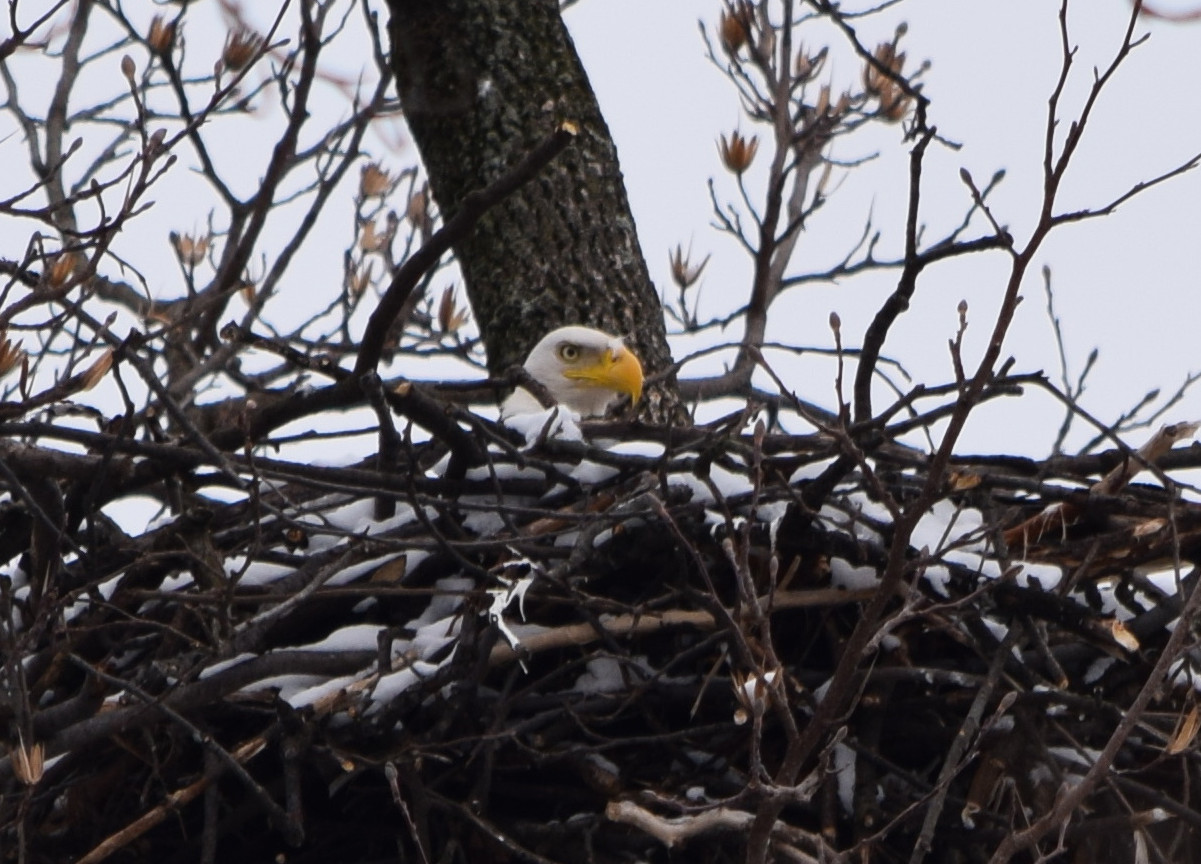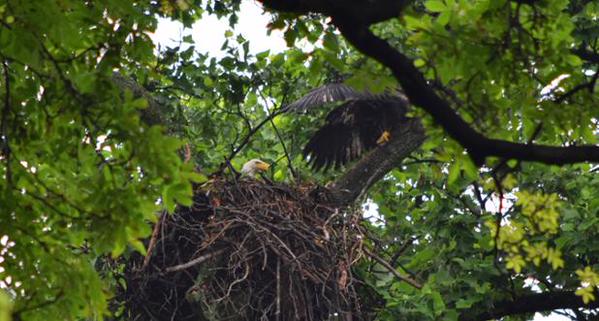
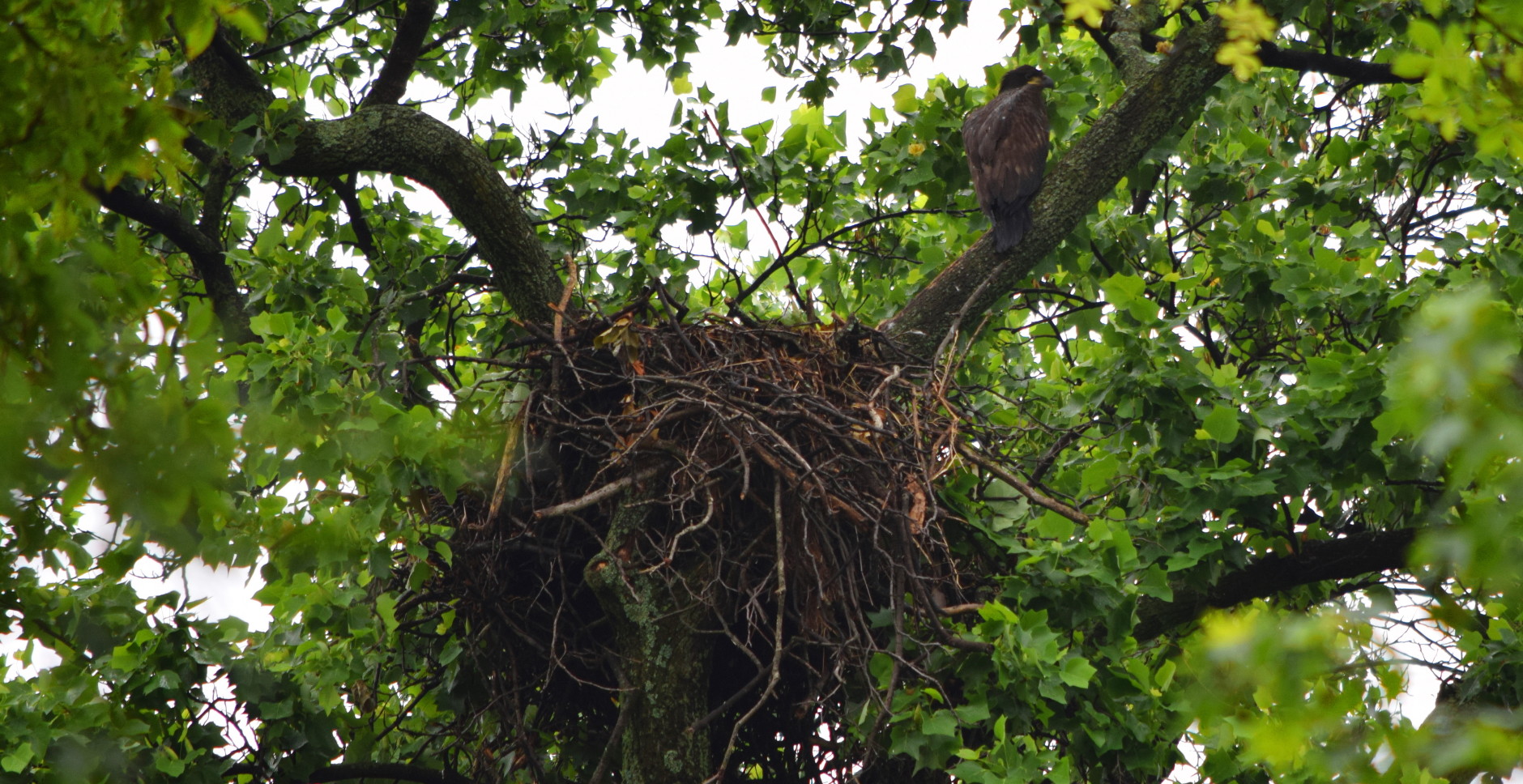
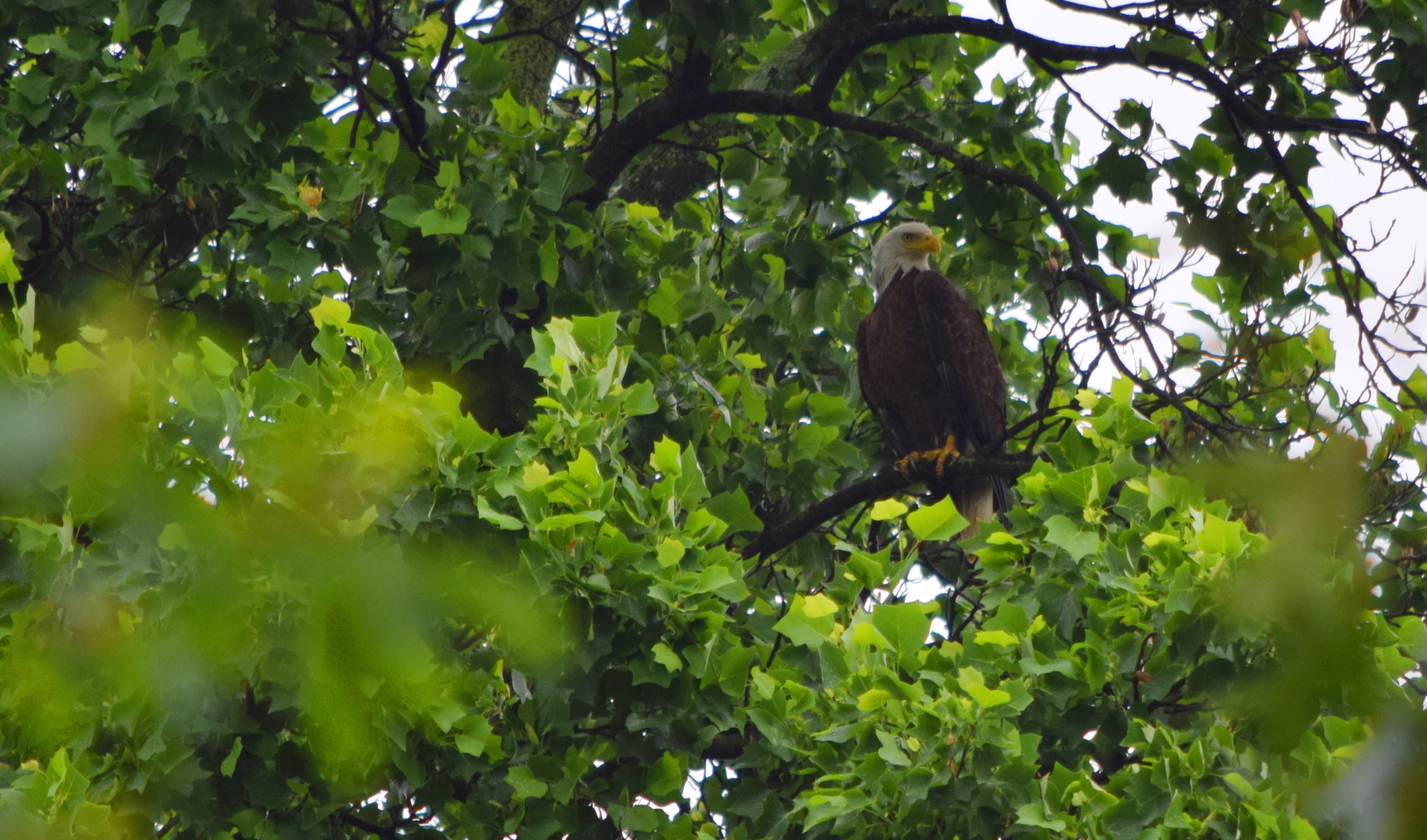
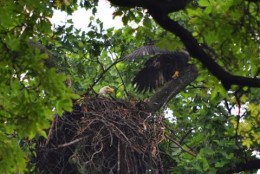
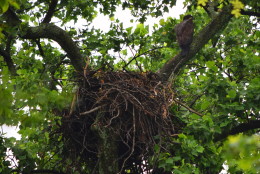
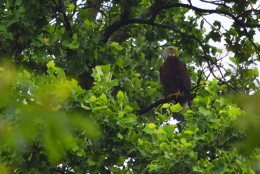
WASHINGTON — It seems like just yesterday the nation’s capital got the news that the District of Columbia was home to not one, but three bald eagle families. In the 12 to 13 weeks since they’ve hatched, the eaglets have gone from fuzzy little chicks to full-sized fledglings, ready to take off.
Dan Rauch with the DC Department of the Environment has been looking in on them once a week and says they’re doing great. There are two eaglets in the nest at Blue Plains, one in the nest on the grounds at St. Elizabeth’s in Southeast D.C. and Junior at the National Arboretum in Northeast D.C. where Rauch is driving this reporter to the site for a look.
When Rauch arrives to the spot nearest the nest on the grounds of the National Arboretum, he’s met by Sue Greeley, an agricultural and science technician with the National Arboretum in Northeast D.C.
Greeley greets Rauch with a present of sorts: she’s found a primary feather from one of the adult eagles. But it’s not really a gift.
“You cannot collect, own, possess or take, even the ‘molted’ ones like this one,” she says.
Instead the feather, like any other find from the nesting eagles, will be shipped to the National Eagle Repository, a division of the U.S. Fish and Wildlife Service in Colorado, for collection and study.
Rauch and Greeley explain that bald eagles “molt” or shed their feathers continuously, a few at a time, unlike ducks who “drop” their feathers all at once. By molting continuously, Rauch says, eagles never lose their ability to fly. If eagles can’t fly, they can’t hunt and if they can’t hunt, they can’t eat.
Rauch and Greeley point out the bald eagle’s nest at the arboretum which is visible through a break in the treetops. Junior, as the lone fledgling at this location is called, is sitting on a limb alongside its nest. That made Greeley nervous. The fledgling had done that despite Monday’s strong winds and heavy rains. She worried the young bird would get blown out of the nest, but Rauch wasn’t too concerned. He noted Junior’s wings looked strong.
Greeley explained that Junior wasn’t a name that had anything to do with the bird’s sex. It’s impossible to tell gender without getting beak and talon measurements, something which is impossible to do without handling a bird at that age. So the moniker is just a convenient name for now.
Picking up his camera and zooming in on the bird, who’d gone from a bundle of gray fuzz to a full-sized eagle without the white head of an adult, Rauch said, “This one looks ready to go at any time.”
Then, there was a flurry of activity and Rauch narrated: “Here comes an adult in right now — with a fish!”
Junior hopped back into the nest to eat the lunch dad just delivered. Still looking through his camera, Rauch described what he was seeing.
“You just saw when he hopped down into the nest — beautiful wing structure, all the feathers are in.”
Rauch was encouraged by how the young bird was carrying its wings. Some young birds let them droop and don’t seem comfortable with their new found growth. Rauch says the wings grow fast and are filled with blood. They’re heavy and some young birds look a bit ungainly. Not Junior though. The fledgling held its wings at rest just as an adult would.
Juvenile bald eagles can be distinguished from mature ones because they have the dark bodies of adults without the distinctive white heads. Rauch says they look like their cousins, golden eagles, which, like bald eagles, remain protected but are no longer endangered.
Rauch says it could be days — or any minute — before Junior and other eaglets in the other nests in D.C. take off. Then they’ll spend an additional few weeks sticking close to the nest with their parents. But there are challenges ahead.
“It gets really tough after this actually. Only about 50 percent of eagles survive their first winter, and only about one in eight make it to adulthood,” says Rauch.


